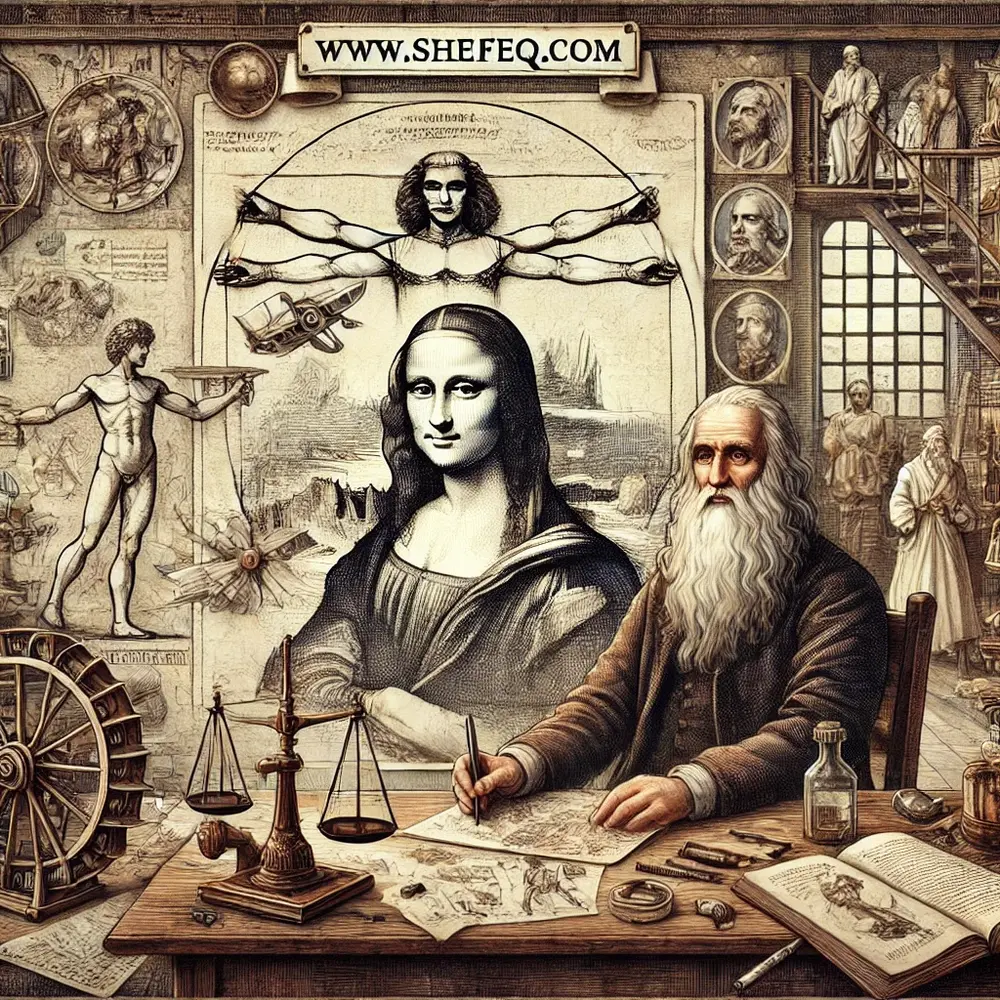INTRODUCTION
Leonardo da Vinci is considered not only one of the greatest minds of his own time but also of all time. He is known as a painter, inventor, architect, anatomist, engineer, and scientist. His works are not only artistic but also reflect profound scientific knowledge and an extraordinary ability to foresee the future. As one of the brightest figures of the Renaissance era, da Vinci made invaluable contributions across various fields.
DA VINCI AND HIS ARTISTIC SKILLS
Leonardo da Vinci’s talent as a painter is unparalleled. With masterpieces such as Mona Lisa and The Last Supper, he became one of the most important figures in the history of world art. His use of form and color deepens the sense of realism in his work. Da Vinci skillfully applied light and shadow techniques to reflect human expressions and emotions with incredible precision.
One of his most famous paintings, Mona Lisa (La Gioconda), is regarded as one of the most mysterious portraits in the world. Her smile, the expression in her eyes, and the unusual background atmosphere have been subjects of research for centuries. Another masterpiece, The Last Supper, depicts Jesus Christ’s final meal with his disciples and is thought to contain hidden symbolism.
SCIENTIFIC AND TECHNICAL RESEARCH
Leonardo was as much a scientist as he was an artist. He conducted research in human anatomy, physics, mechanics, and biology, predicting many inventions long before their time. He created initial sketches of devices such as the parachute, helicopter, and tank—technologies unimaginable during his era.
He had a particular interest in human anatomy, dissecting hundreds of cadavers to produce highly accurate anatomical drawings. His work in this field significantly contributed to the development of medical knowledge.
HIDDEN CODES AND MYSTERIOUS MESSAGES
It is claimed that Leonardo’s works contain hidden codes and encrypted messages. The smile of the Mona Lisa and the arrangement of figures in The Last Supper suggest that he may have embedded secret messages. Some researchers believe that encrypted messages exist in his writings and drawings.
Theories such as those in The Da Vinci Code suggest that his works contain Masonic symbols, sacred mathematical ratios, and even lost knowledge. Da Vinci used mirror writing to prevent others from reading his notes, a method he used to keep some inventions and scientific findings confidential.
DA VINCI AND FORESIGHT
Leonardo imagined many scientific advancements long before they were realized and depicted them in his sketches. He conducted remarkable studies on the human body, flight technologies, and artificial devices. For example, his drawings of flying machines resemble today’s helicopters and airplanes.
He illustrated ideas for submarines, the prototype of the modern tank, and automatic mechanisms. While these inventions were not feasible in his time, many became realities centuries later.
DA VINCI’S INFLUENCE ON SCIENCE AND TECHNOLOGY
Leonardo da Vinci’s scientific insights and technical sketches remain highly relevant today. His approach to mathematics and physics, interest in medicine, and ideas on urban planning are still considered groundbreaking.
He even proposed concepts like artificial organs and robotic hands based on human anatomy. Many technological advances we see today reflect the ideas he proposed centuries ago.
WHY DOES LEONARDO DA VINCI STILL HAVE SUCH GREAT INFLUENCE?
Da Vinci’s legacy is immensely valuable in understanding the world and advancing human thought. He built a bridge between science and art, establishing himself as one of history’s most influential figures. His comprehensive knowledge and innovative ideas continue to inspire modern scientists and artists.
Today’s designers, engineers, and researchers still refer to his notes to develop new technologies. Leonardo’s work was not created for a single era—it was created for all of humanity.
CONCLUSION
Leonardo da Vinci was a true genius. He had the ability to foresee the future and was one of the most forward-thinking minds of his era. His work continues to impact the fields of science, technology, and art today. Da Vinci’s creativity, his unique way of thinking, and his futuristic vision still inspire people around the world.
When we look at Leonardo’s life and works, it is clear that he was not just a painter but also a true scientific revolutionary and a visionary who helped shape the future. He was far ahead of his time and showed us the way not only to understand the past but also to imagine the future.

